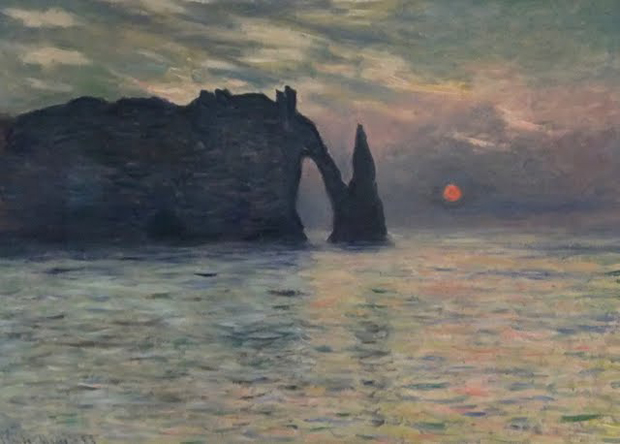
Revealed - the exact moment Monet painted this
A Texas State University study uses celestial and tidal data to pinpoint the moment captured in Monet's seascapes
"On one occasion while painting the Manneporte at Étretat," writes art history professor John House in our Monet book, "[Monet] was swamped by a vast wave, when he had mistimed a session of painting on the beach after misreading the tide tables."
No such misreading could be attributed to Donald Olson from the Department of Physics at Texas State University. Olson, who describes himself as a celestial sleuth, likes to solve simple questions about works of art by examining astronomical and other clues contained in many landscape paintings. A few years ago, he and his colleagues traveled to Norway to confirm suspicions that the 1883 eruption of Krakatoa could have caused the blood-red sunset that inspired Edvard Munch's The Scream (1893 - 1910).
Now In the February 2014 edition of Sky & Telescope, Olson describes a trip to France with fellow researchers, students Ava Pope, Laura Bright, and Hannah Reynolds to investigate some of Claude Monet's Normandy paintings.

This time the team paired historic tidal charts with measurements of the positions of the sun and the moon during Monet's stay in this part of coastal France to work out just when the images the artist was capturing manisfested themselves.
The impressionist painter executed the works in question during a three-week stay in the region during the winter of 1883. By measuring the natural landmarks, the positions of the celestial bodies and the height of the tides, Olson and co believe Étretat: Sunset was painted on February 5, 1883 at 4:53pm local mean time.
We like to use astronomy to show students how science can solve real-world puzzles," Olson told the magazine. "We asked, 'Could we use the dramatic rocks in the landscape and the position of the setting sun to determine where and when, specifically, Monet created this beautiful masterpiece?'"
For more on this, go here. For greater, if less celestially inclined, insight into this great painter's work, consider our large-format illustrated book.